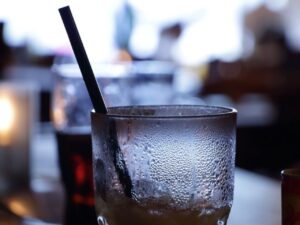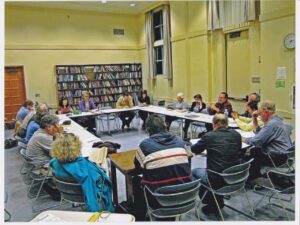I do not lay awake at night wondering about the permutations of whether Oscar Pistorius shoots with or without prosthetics, I do not toss and turn weighing in my mind the quality of Lindiwe Mazibuko’s State of the Nation Address rebuttal, nor do I consider whether Vernan Philander can bowl better. No friends, I ask myself how can I get more people drinking wine.
I sit up and think maybe the coffee-pinotage brigade are right. Maybe we should entice new wine drinkers by offering sweetie-pie, soft as marshmallow reds, cynically forced wines trying their hardest to taste as little as wine as possible. If we get our claws into them with something fake, then perhaps we can reel them in, with bottles each more authentic than the last, until they are happily swigging skin-contact Chenin, and harping on about the benefits of Carignan and Grenache Blanc?
No. This is silly. I toss and turn some more, mumbling obscenities, “Mmehph..fucking..mrummph…merlot…coffee…damn cool-aid mprumph…pinots…” This does not make for a peaceful night’s sleep. I ask myself how is everyone not drinking wine. How does any beverage stand up to it? How does coca-cola even exist in the face of a streamlined, silky Pinot Noir? A spicy sexy Syrah? How? I shout, punching my pillow. What is wrong with the world?
I think I have found an answer. Not as to what is wrong with the world, but how to get more people into wine. Harvest.
It’s that time of year. You can’t miss it up Stellies way. Bunches of half crushed grapes lying scattered on the roads, tractors driven by mustachioed farmers in uniform short blue shorts holding up traffic as they pull their load of grapes from vineyard to cellar. The summer heat, the smell of fermenting grapes, the stickiness of it all; it’s in the air, birth, death, harvest.
Harvest time in the Southern Hemisphere is upon us; tons and tons of white grapes have been picked. Right this second in cellars across the southern hemisphere yeasts are chomping on sugars, and wines that you will taste in good time are being created. It is magnificent.
Wine, unlike beer, vodka, soda-pop, or Brutal(ly horrible) Fruit, cannot be made on demand. You get one shot a year. A year’s worth of work in the vineyard, careful maneuvers and decisions made as the weather does its thing, end as the grapes reach ripeness. Now, another slew of decision-making and actions commence as the grapes come in. Each move and tactic inevitably affecting what will end up in bottle and in your glass. Bacchus, reborn after winter, his spirit in each grape, sacrificed at harvest for that most ancient and wondrous of drinks.
I took a drive out this week to visit a bunch of winemakers and cellars as this controlled but chaotic season kicks off. What I found was delightful. Wide-eyed winemakers, dead-tired cellar hands, bubbling barrels and tanks, sticky floors: wine being born.
It has been a slightly tricky harvest so far, with a long cool winter, and expectations of a long ripening period. This was cut short in January with some hot, windy and dry conditions that accelerated the grapes’ ripening. Grapes started arriving in cellars earlier than expected as a result, and with some bursts of rain this month heightening the chances of bunches rotting on the vine, vignerons have had to be on form.
The Stellenbosch wine makers I chatted to seemed to agree that if your vineyards were in good condition, and sound viticultural decisions had been made in the last year or two, you can expect excellent quality grapes. I tasted this at Reyneke, a biodynamic winery. Some old vine Chenin had just been pressed. I am no master when it comes to tasting grape juice and judging its quality, in fact I have very little knowledge in what to look for. The Chenin juice I tasted, however, was one of the most delicious things that has ever graced my lips. It tasted, and this may sound silly, distinctly of Chenin Blanc. So pure, and rich and delicate. Truly, nectar of the gods.
This sticky, sweet ambrosia now goes into large wooden fermenters to go through that magical (I know it’s science) process where it becomes wine. It will then age for around a year before being bottled and sold.
From big cellars with organized rows of massive stainless steal tanks, advanced technologies and lots of space, to small sheds with a small basket press, some large plastic tubs and a couple of barrels, all of them, really, doing the exact same thing. Some let nature take her own course; others intervene with a rougher hand. Barrels must be chosen, temperatures regulated, lees filtered, stirred and settled. The pathways to wine from juice are simple and complex at the same time.
Before we can give silly tasting notes, debate hollowly about terroir and sense of place, before we pull the cork to impress our friends, so much has to happen, and it is happening right now. If you can, please please go out and see. It’s the time when you get to witness nature and man interact most directly in the winemaking process. Harvest is the time of stress, broken wine presses, flooded cellar floors, rejoicing in quality juice, stiff arms and legs, exhausted cellar-hands, and bubbling wines; it’s the yeast’s party, the sugar’s funeral, it’s harvest and it is here. When you spend a day watching wine being made, you spend a day falling in love with wine.





